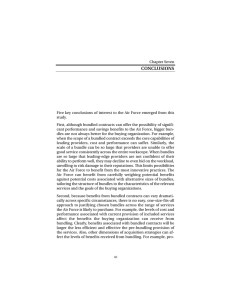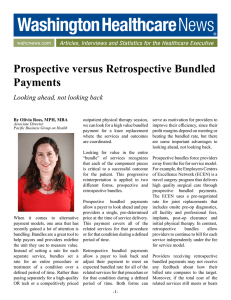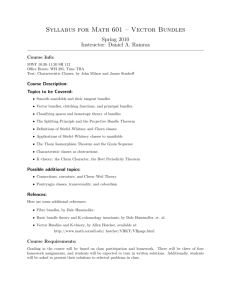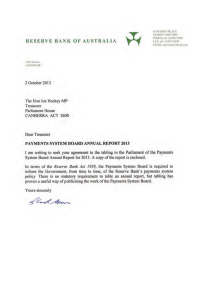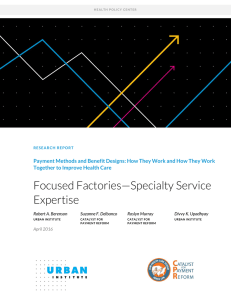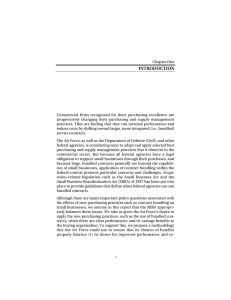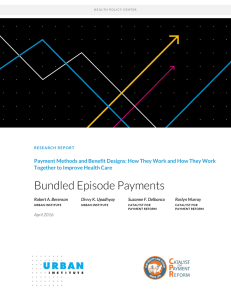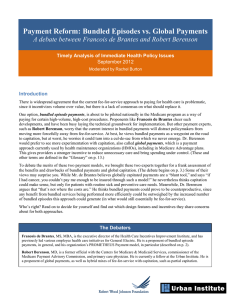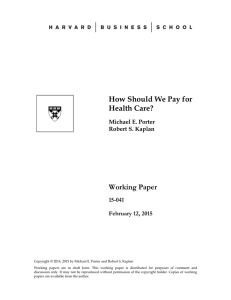Using Episode‐Based and Other Bundled Payments to Impro e Q alit of Care Improve Quality of Care
advertisement
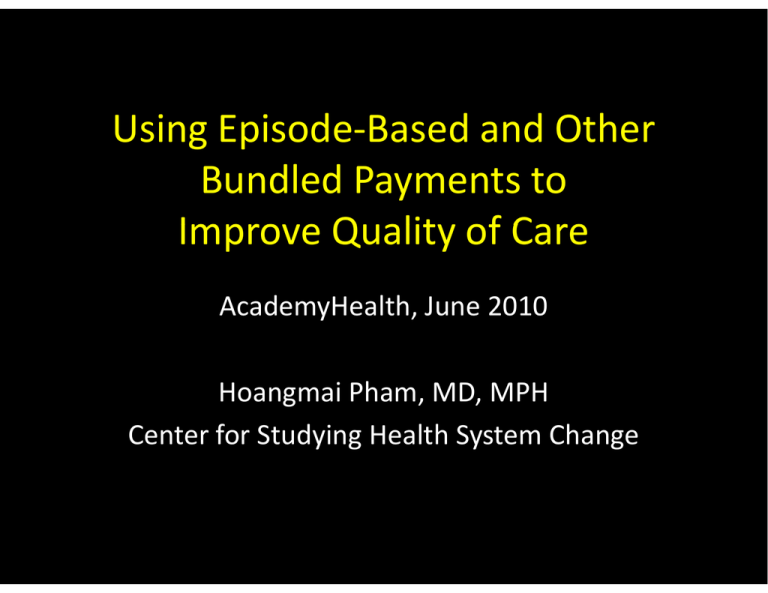
Using Episode‐Based and Other Bundled Payments to Impro e Q alit of Care Improve Quality of Care AcademyHealth, June 2010 d lh Hoangmai Pham, MD, MPH Center for Studying Health System Change Center for Studying Health System Change For any type of payment to motivate quality improvement…. Encourage coordination Discourage underuse and overuse Discourage underuse and overuse Reflect clear lines of accountability among providers Correspond with care “units” for which quality can be measured • Linked to meaningful performance incentives Be feasibly implemented on a large scale • Be feasibly implemented on a large scale • • • • …but not necessarily that… but not necessarily that • All services are affected • Performance payments always coupled to Performance payments always coupled to service payments – Pay for services, separate reward for quality P f i t df lit performance – Pay for services, withhold for performance – Set levels of service payment based on performance Spectrum of bundling Spectrum of bundling • Full capitation Full capitation • Capitation for broad categories of services – All physician services, all outpatient services All ph sician ser ices all o tpatient ser ices • Payment / time unit for all services related to single dx – Usually for chronic conditions – End‐stage renal disease bundle • Payment for some/all services related to single episode of illness – Acute or chronic (if clinically defined endpoint) – Hip fracture, low back pain Potential for bundled payments to encourage coordination? • Concentrated responsibility • Shared responsibility Shared responsibility • Flexibility for coordination tasks not currently reimbursed b d Potential of bundling to discourage underuse and overuse? • Risk of scrimping higher – But relatively broad set of standardized ways to measure (and then penalize) underuse • Direct disincentive to overuse services – Except potential to generate more bundles or episodes – Only gross measurement tools available for detecting overuse Does bundling reflect clear lines of accountability? • Who receives payment for services • Who receives reward for quality performance Who receives reward for quality performance • Degree of influence of that provider over the b h behavior of other providers f h d • Whether any of above is known at the start of the episode of care Can quality be measured for “bundles”? Can quality be measured for bundles ? • Measures exist for many high prevalence bundles – AMI, CABG, hip fracture, pneumonia • Unclear start/endpoints for other bundles – Chronic episodes p – Confounding by access issues • Imperfect risk adjustment at the level of episodes Imperfect risk adjustment at the level of episodes Potential for linkage of bundles to meaningful performance incentives? • Zero‐sum game? Or new dollars from payer? – Benchmarking issues • Size of performance incentive relative to size of service payments (which will providers focus on?) – Historical or normative levels of service payment? • Number of bundles per provider • Percentage practice revenue from a given payer Percentage practice revenue from a given payer Potential to implement bundled payments on a large scale? • • • • Limits of relying on existing (claims) data Prospective vs. retrospective measurement i i Prospective vs. retrospective payment Possible vehicles in PPACA Possible, but not quickly P ibl b i kl Takeaways • Episode and other bundled payments can better support QI than fee‐for‐service, but… • Needs development of more quality measures (overuse, episode‐level), better risk adjustment • Requires operational deftness to define bundles p ospect e y a d a o at e ay prospectively and in a normative way • Requires correcting price distortions in FFS, collaboration among payers collaboration among payers
